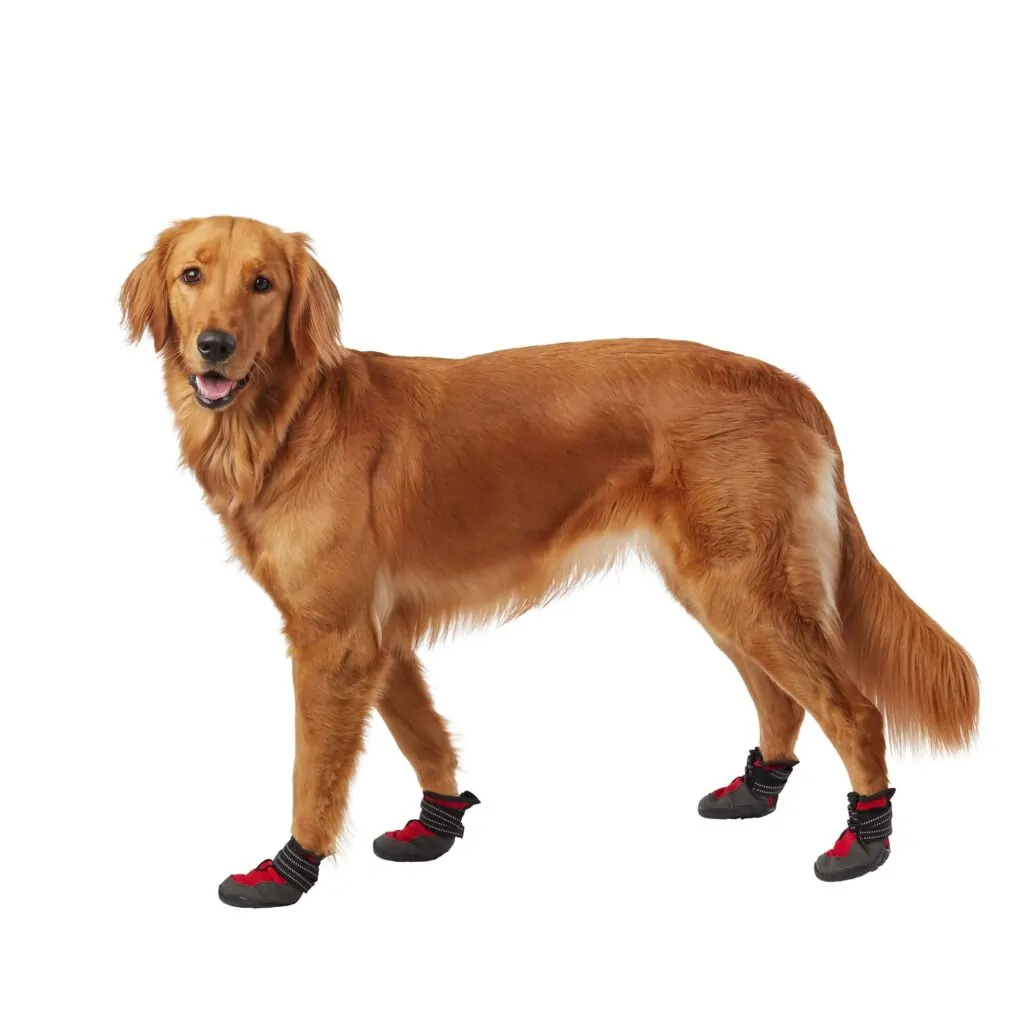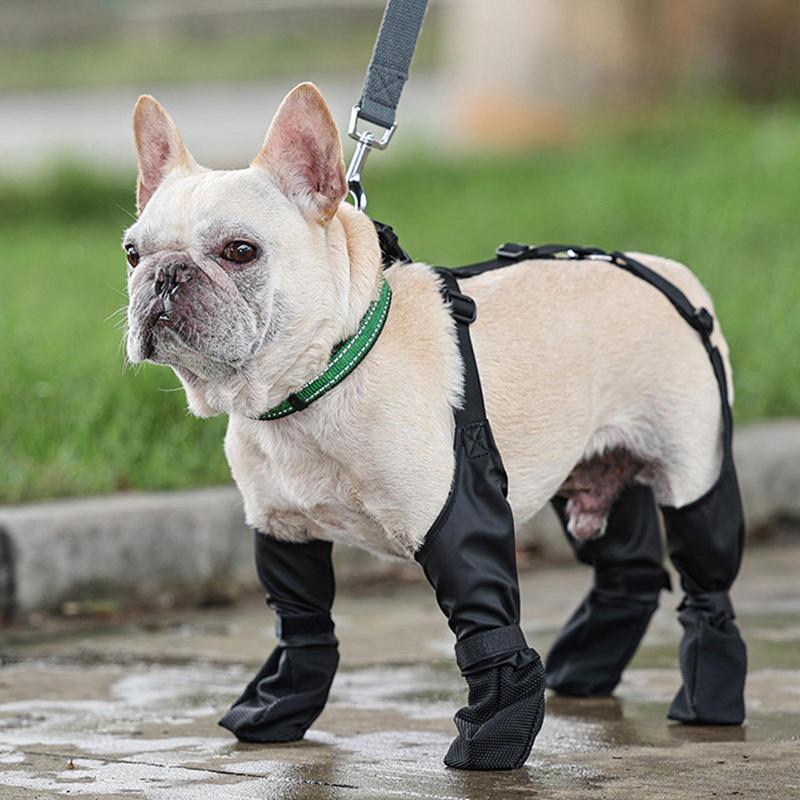Dog Booties: Protect Paws in Every Season | Ultimate Guide 2025
Discover why dog booties are essential for protecting your dog’s paws in any weather. Learn how to choose the right pair and ensure a comfortable fit.
Ever wondered why your furry friend might need a pair of shoes? Dog booties aren’t just a fashion statement – they’re essential gear for protecting our canine companions’ paws in various conditions. From scorching summer sidewalks to icy winter streets, these paw protectors offer comfort and safety for our four-legged friends.
We’ve seen a growing trend in pet owners investing in dog boots, and for good reason. These clever accessories not only shield paws from extreme temperatures and rough terrain but also provide traction for older dogs or those with mobility issues. Whether you’re an avid hiker with a trail-loving pup or a city dweller handling salt-covered sidewalks, there’s a perfect pair of dog booties out there for every situation.
Why Dogs Need Booties
Dog booties are essential accessories that protect canine paws from various environmental hazards. They offer crucial benefits for dogs in different situations, ensuring their comfort and safety during outdoor activities.
Protection from Extreme Weather
Dog booties provide vital protection against extreme weather conditions. In hot weather, they shield paws from scorching surfaces like asphalt, concrete, and sand, preventing painful burns and blisters. When temperatures soar above 85°F, these surfaces can reach 140°F, causing severe injury to unprotected paws. During winter, booties guard against frostbite and cold injuries, especially in temperatures below 32°F. Insulated boots with faux fur or specialized fabric prevent hypothermia and allow dogs to play comfortably in the snow. Also, booties protect paws from harmful chemical substances like road salts and deicers, which can cause irritation or toxicity if ingested or absorbed through the skin.
Injury Prevention and Paw Care
Dog booties play a crucial role in injury prevention and paw care. They provide traction on slippery surfaces, reducing the risk of falls and injuries, particularly for older dogs or those with mobility issues. On rough terrains, booties offer cushioning and protection against cuts, scrapes, and punctures from sharp objects like rocks, thorns, or broken glass. For dogs recovering from paw injuries or surgeries, booties create a protective barrier that aids in the healing process and prevents further damage. They also shield paws from allergens and irritants that may cause discomfort or trigger allergic reactions. By wearing booties, dogs can safely navigate various environments while maintaining healthy, well-protected paws.
Types of Dog Booties
Dog booties come in various styles, each designed for exact purposes and environments. We’ll explore three main types of dog booties: thick traction sole boots, soft sole boots, and rubber coverings.
Thick Traction Sole Boots
Thick traction sole boots offer robust protection for dogs in rugged terrain. These boots feature durable soles with excellent grip, making them ideal for hiking, backpacking, and mountain biking. The sturdy construction shields paws from sharp objects like rocks, thorns, and broken glass. Thick traction sole boots provide superior traction on various surfaces, ensuring stability during outdoor adventures. They’re particularly useful in challenging environments where dogs need extra support and protection. While heavier than other types, these boots offer unparalleled durability and safety for active dogs exploring rough terrain.

Soft Sole Boots
Soft sole boots provide a balance between protection and comfort for dogs. Available in non-leather and leather varieties, these boots offer flexibility and lightweight wear. Non-leather soft sole boots often use waterproof thermoplastic materials, combining durability with paw protection. Leather options provide a natural, breathable alternative. Soft sole boots are ideal for everyday use, offering protection from hot pavement, cold surfaces, and minor irritants. They’re less restrictive than thick traction boots, allowing for more natural paw movement. These boots are perfect for urban walks, light hiking, and dogs who need gentle paw protection without compromising mobility.
Rubber Coverings
Rubber coverings offer a unique approach to paw protection for dogs. These flexible, waterproof boots provide excellent insulation against extreme temperatures and wet conditions. Rubber coverings are easy to put on and take off, making them convenient for quick outdoor trips. They’re particularly effective for protecting paws from ice, snow, and harmful chemicals like road salt during winter. In summer, rubber coverings shield paws from hot surfaces and provide a barrier against allergens and irritants. While not as durable as thick traction boots, rubber coverings offer versatile, lightweight protection suitable for various weather conditions and short-duration outdoor activities.
Choosing the Right Dog Booties
Selecting the perfect dog booties ensures your furry friend’s comfort and protection during outdoor adventures. We’ll guide you through the essential factors to consider when picking the ideal boots for your canine companion.
Measuring Your Dog’s Paws
Accurate paw measurements are crucial for finding the right fit. To measure your dog’s paws:
- Place their paw on a piece of paper
- Gently press down to spread the toes
- Mark the width and length of the paw
- Measure from the marks to get the dimensions
For the most precise measurement, lift the opposing paws to spread the toes fully. When in doubt, size up. A slightly larger bootie is preferable to one that’s too tight. Remember, front paws are often wider than rear paws, so consider purchasing two sets of different sizes for the best fit.
Considering Your Dog’s Activity Level
Your dog’s lifestyle and activities play a important role in choosing the right booties:
- For hiking and rugged terrain: Select boots with deep grooves and anti-slip soles for improved traction on uneven surfaces
- For everyday walks: Opt for lightweight, breathable boots that provide basic protection
- For winter activities: Choose insulated boots with water-resistant materials to guard against cold and moisture
- For hot pavement: Look for boots with heat-resistant soles to prevent burns
Consider the frequency and intensity of your dog’s activities. High-energy dogs may require more durable boots, while less active pups might do well with simpler designs. Boots designed for exact activities, such as winter sports or summer hikes, can enhance your dog’s performance and comfort during these adventures.
How to Introduce Dogs to Wearing Booties
Introducing dogs to wearing booties requires patience and a strategic approach. We’ll explore effective techniques to help your furry friend adjust to this new accessory comfortably and confidently.
Gradual Acclimation Techniques
Gradual acclimation is key to successfully introducing dogs to booties. Start by letting your dog explore the booties, allowing them to sniff and investigate. Place treats near or on the booties to create positive associations. Begin with short indoor sessions, putting on one bootie at a time. Let your dog wear it for a few minutes, then remove it. Gradually increase the duration and number of booties worn. Once comfortable indoors, transition to short outdoor walks. Monitor your dog’s reactions and adjust the pace accordingly. Use distractions like toys or treats during the process to keep their focus off the booties. With consistent practice, most dogs adapt to wearing booties within a few weeks.
Positive Reinforcement Strategies
Positive reinforcement is crucial when introducing dogs to booties. Reward your dog with treats, praise, and affection every time they interact positively with the booties. Use high-value treats to make the experience more appealing. Incorporate fun activities or games while your dog wears the booties to create positive associations. Celebrate small victories, such as your dog taking a few steps in the booties.

Never force your dog to wear them if they show signs of stress or discomfort. Instead, take a step back and proceed more slowly. Maintain a calm and encouraging demeanor throughout the process. Consistency is key – practice regularly and keep sessions short and positive. Over time, your dog will associate wearing booties with positive experiences, making the transition smoother.
Caring for Dog Booties
Proper care and maintenance of dog booties are essential for their longevity and effectiveness. Regular cleaning, proper storage, and timely replacement ensure your dog’s paws remain protected and comfortable.
Cleaning and Maintenance
Clean dog booties after each use with mild soap and water, especially when exposed to mud, dirt, or ice. Gently scrub the soles to maintain traction without using harsh chemicals or abrasive materials. Ensure booties are completely dry before storage to prevent moisture buildup and potential yeast infections. Regularly inspect for signs of wear, such as torn seams, worn-out soles, or loose straps. For boots with anti-slip soles, clean them carefully to preserve their grip. Proper maintenance extends the life of the booties and maintains their protective qualities for your dog’s comfort and safety.
When to Replace
Replace dog booties when they show important signs of wear and tear. Look for frayed edges, holes, or worn-out soles that compromise protection and traction. If the booties no longer fit properly due to stretching or shrinkage, it’s time for a new pair. Regularly check the velcro or fastening mechanisms; if they’re no longer secure, replace the booties to prevent them from falling off during walks. For dogs that wear booties frequently, consider replacing them every 3-6 months, depending on usage and wear patterns. Timely replacement ensures continued paw protection and comfort for your dog during outdoor activities.

Alternatives to Dog Booties
While dog booties offer excellent protection, some dogs may not tolerate them well. Fortunately, several alternatives can provide similar benefits for paw protection and comfort.
Paw Balms and Waxes
Paw balms and waxes are popular alternatives to dog booties, offering a protective layer for your dog’s paw pads. These products create a hydrophobic barrier that shields paws from salt, chemicals, and extreme temperatures. Musher’s Secret, a well-known brand, is easy to apply and mimics the natural protection of a dog’s paw pads. When using paw balms:
- Apply a thin layer before outdoor activities
- Reapply as needed, especially in harsh conditions
- Choose products with natural, non-toxic ingredients
- Use regularly to maintain paw health and moisture
While not providing as much protection as booties, balms and waxes are less intrusive and can be an excellent option for dogs that resist wearing footwear.
Protective Sprays
Protective sprays offer a quick and convenient alternative to dog booties, especially for short outings. These sprays typically contain a blend of natural oils and waxes that create a temporary barrier on your dog’s paw pads. Key benefits include:
- Easy application without the need for fitting or adjustments
- Quick-drying formulas that don’t leave residue
- Protection against hot surfaces, salt, and ice
- Often include moisturizing ingredients for paw health
When selecting a protective spray:
- Look for products with all-natural, non-toxic ingredients
- Choose sprays specifically designed for dog paws
- Consider options with added grip for slippery surfaces
- Test on a small area first to ensure no adverse reactions
While sprays may not offer the same level of protection as booties for extended periods, they’re an excellent option for daily walks or brief outdoor activities.
Conclusion
Dog booties are more than just a trendy accessory; they’re essential for protecting our furry friends’ paws. From extreme weather to rough terrain, these versatile protectors offer comfort and safety in various environments.
We’ve explored the types of booties available, how to choose the right fit, and even alternatives for picky pups. By investing in quality booties and properly caring for them, we’re ensuring our dogs can enjoy outdoor adventures safely and comfortably.
Remember, introducing booties may take time and patience, but the benefits far outweigh any initial resistance. Let’s step up our game and give our four-legged companions the paw protection they deserve!

